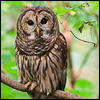Forests are patchworks of burn sites. Unfortunately, the recent deaths, displacements and property damage are a huge disaster. Fire ecology of forests is a normal evolution. Before humans got careless, forest fires were started by lightning. At any given time there are about 2,000 thunderstorms around the planet. That is about 50 lightning strikes per second.
Pinus Contorta is an interesting example of a mutation in evolution that has occurred over a very long time. 'A fire-dependent species'.
From Wikipedia ( you don't have to read it if you don't like Wikipedia ).
Pinus Contorta:
Ecology[edit]
P. contorta subsp. latifolia forest 23 years before (above) and 10 years after (below) the Yellowstone fires of 1988
Pinus contorta is a fire-dependent species, requiring wildfires to maintain healthy populations of diverse ages. The bark of the lodgepole pine is fairly thin, minimizing the tree's defense to fire; however, the heat of fire opens the cones to release the seeds. This allows the species to regenerate and maintain its place in the forest habitat.[28] One plant community in which Pinus contorta is found is the closed-cone pine forest of coastal California.
Excessive wildfire prevention disrupts the fire ecology. The stands are usually so densely populated that the trees self-thin, or out-compete each other, leaving dead trees standing. These become a dry ladder fuel that can accelerate the fire to the crown of living trees. When the fire reaches the crowns of the trees, it can jump from tree to tree and becomes relatively unstoppable.
The natural fire regime for this species is primarily driven by climate. The fires occur most often after years of drought. Pinus contorta occurs from the upper montane to the subalpine region. These types of forests experience a lot of moisture in the form of snow in the winter due to their altitude. The density of the tree stand also inhibits the establishment of an understory. With all of that being said, the likelihood of a surface fire occurring is rare. Thus, infrequent but severe fires dominate this species.[28]
An example of the climate that plays a huge role in the fire regime of Pinus contorta is quite complex. There are three different oscillations that play a major role in droughts. These are the Pacific Decadal Oscillation (PDO), Atlantic Multi-decadal Oscillation (AMO) and El Nino (ENSO). A combination of these oscillations being in effect (+) or not in effect (-) have a global effect on the water available to these forests. So when the AMO +, ENSO – and PDO –, there is going to be a drought and likely a severe subalpine fire.[29]
A cluster of pollen-bearing male cones at Mount San Antonio
Suillus tomentosus, a fungus, produces specialized structures called tuberculate ectomycorrhizae with the roots of lodgepole pine (Pinus contorta var. latifolia). These structures have been shown to be the location of concentrations of nitrogen-fixing bacteria which contribute a significant amount of nitrogen to tree growth and allow the pines to colonize nutrient-poor sites.[30][31]
Threats[edit]
This species is attacked by blue stain fungus (Grosmannia clavigera), distributed by the mountain pine beetle from its mouth.
A study released in 2011 concluded that Pinus contorta could experience significant reductions in distribution due to climate change by the late 21st century.[32][33]
Intervals between massive burns are noted on tree ring studies. Indigenous peoples of the west coast may have oral histories of huge burns. The Forest Service studies the burn histories to develop strategies for fire prevention. The methods for 'pine' forests are different than 'fir' forests but politicians want a 'one size fits all' approach and that does not work. The USFS in your states will have research papers on pine and fir forest fire events. Worth a look. I found a paper on a Washington State area that examined tree rings from the 1600's to the 1800's and found over 100 fires.



